Unlocking the Power of Real-World Experiences in Child Education
Supporting children's learning through real-world experiences involves engaging them in meaningful, relevant activities that foster curiosity, critical thinking, and practical skills. By integrating everyday situations, community interactions, and hands-on projects, parents and educators can create dynamic learning environments that extend beyond traditional classroom walls. This approach not only makes learning more engaging but also prepares children for real-life challenges and opportunities, nurturing well-rounded development and lifelong skills.
Examples of Authentic and Real-World Learning Experiences
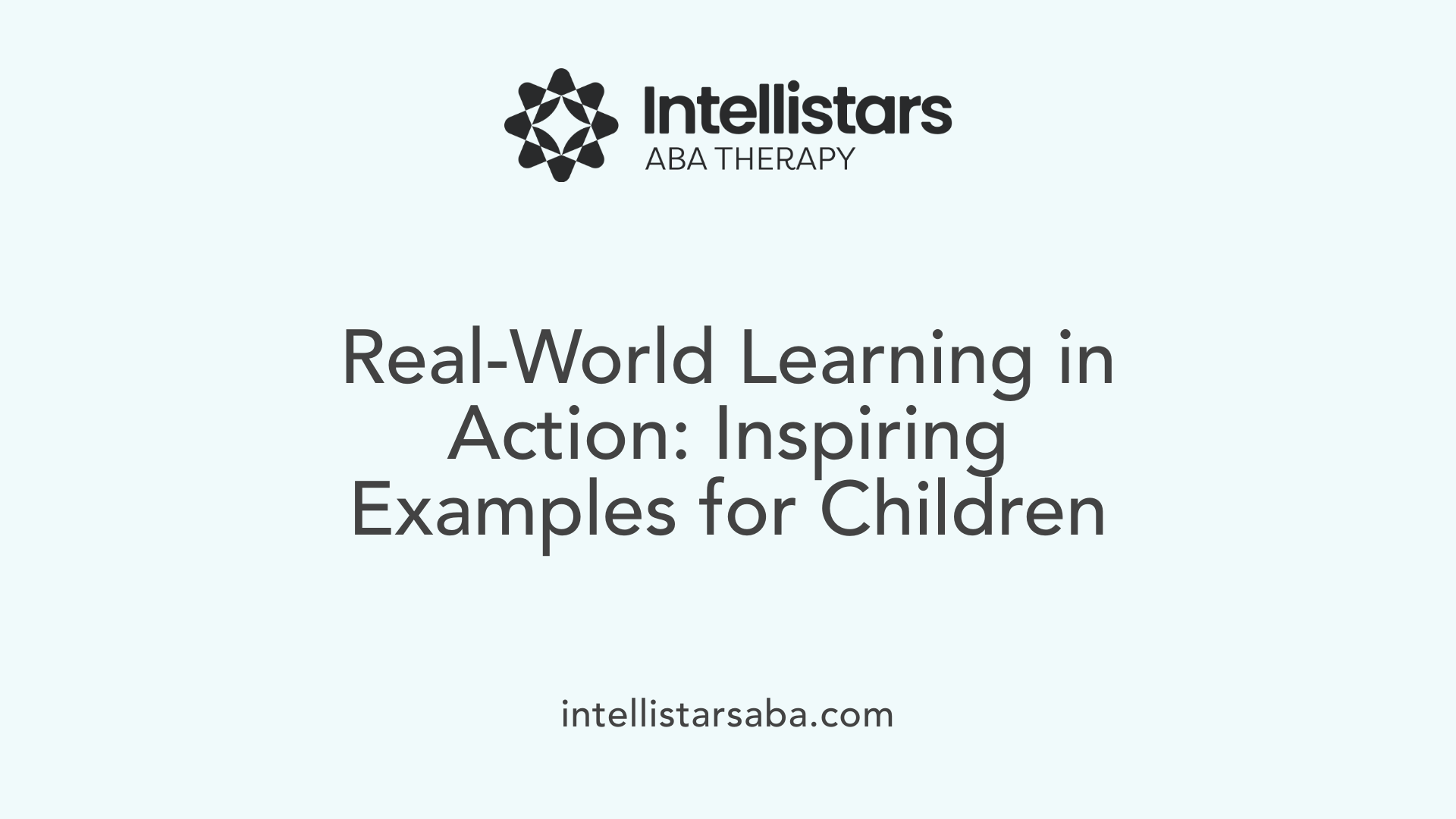
What are examples of authentic and real-world learning experiences?
Authentic learning involves engaging children in activities that mirror the real world. These projects are meaningful and relate directly to their lives, communities, and future careers.
One common example is solving real-world problems through problem-solving activities. For instance, students might design a plan to reduce energy consumption in their school or community, applying math and science concepts in a practical context.
Research projects involving community or industry experts are also highly effective. Children can interview professionals, participate in community-based studies, or explore local history, gaining insights from real-world sources and contributing to local issues.
Simulations that mimic real-world tasks prepare children for actual adult responsibilities. Examples include role-playing banking activities for financial literacy or conducting mock trials to understand law and justice, which help develop decision-making skills.
Creating products such as videos, portfolios, or presentations enables children to showcase their understanding in a tangible form. These projects often involve planning, collaboration, and technology use, reinforcing skills like communication and digital literacy.
Service-learning projects connect children with their communities through volunteering or projects that address social needs. For example, students might organize a local clean-up or run a fundraising campaign, cultivating empathy, responsibility, and teamwork.
Overall, these experiential activities activate inquiry, critical thinking, and collaboration, equipping students with skills applicable beyond school walls. Reflection on these projects helps connect concepts to real-world challenges, making learning relevant and memorable.
The Significance of Connecting Education with Real Life
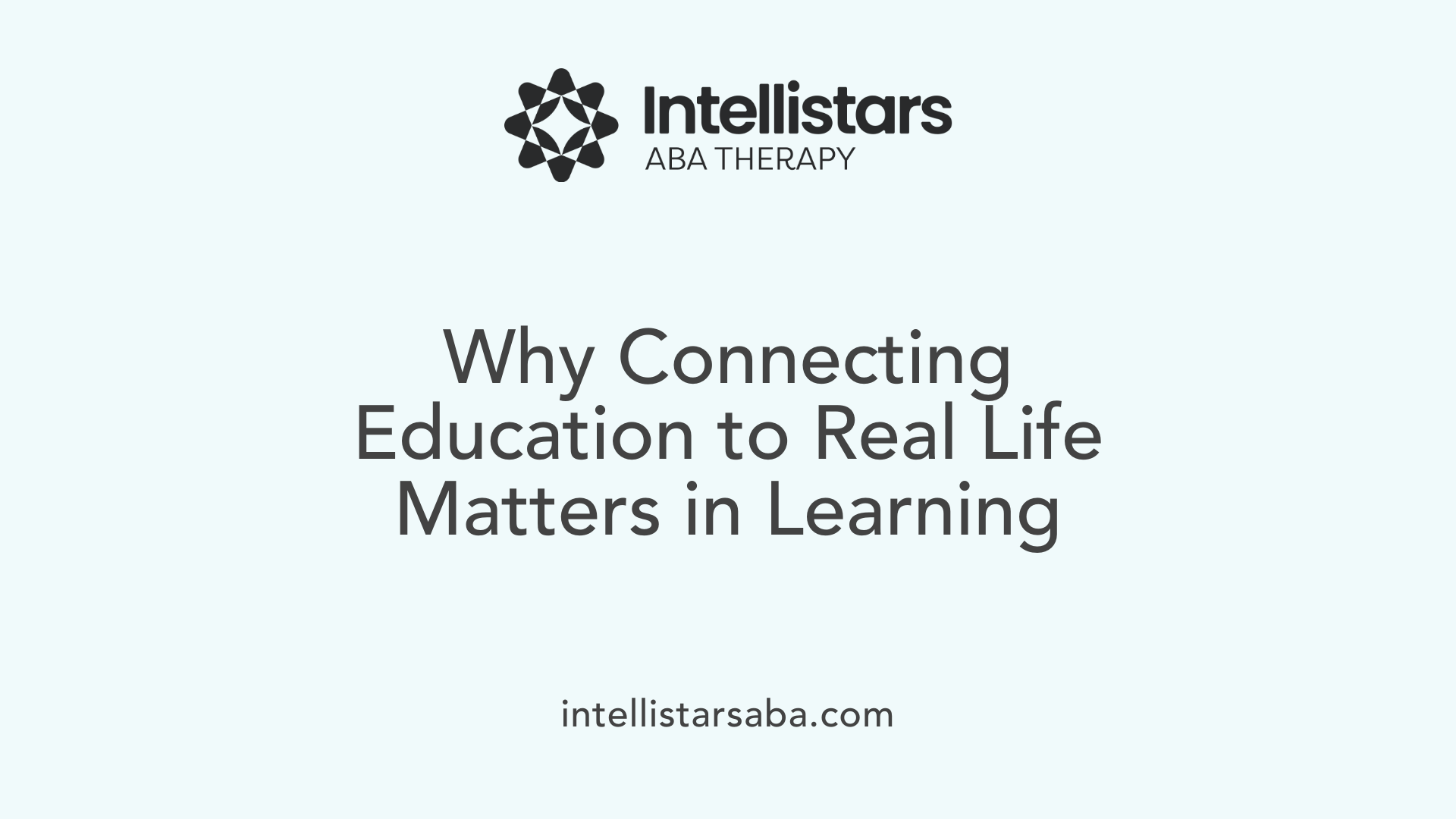
Why is making real-world connections important in education?
Building connections between classroom learning and real-life experiences significantly enhances the educational journey. When students see how academic concepts apply to everyday situations, their interest and motivation increase. For example, relating mathematical equations to practical tasks like baking or managing a budget helps students grasp abstract ideas through familiar activities.
Incorporating real-world examples—such as current events, community projects, or case studies—encourages students to develop critical thinking and decision-making skills. These experiences mirror the complexities of everyday life, offering opportunities to analyze, compare, and reflect.
Utilizing multimedia tools, field trips, and authentic problem-solving tasks further deepens understanding. Observing and participating in real-world scenarios allows students to see the relevance of their knowledge, making learning memorable and applicable.
Furthermore, connecting education to real contexts fosters social-emotional skills. It promotes empathy, collaboration, and global awareness by engaging students in community issues or multicultural topics. These experiences prepare students not only academically but also socially and emotionally, nurturing responsible citizens.
Overall, the integration of real-world applications in teaching transforms traditional education into a dynamic, engaging, and meaningful process. It equips learners with essential skills for life, career, and citizenship, emphasizing that learning is most effective when it is relevant and connected to the world around them.
Practical Strategies for Fostering Real-World Learning at Home and School
How can educators and parents foster real-world learning opportunities for children?
Creating meaningful learning experiences that extend beyond textbooks and classroom walls is essential for developing skills such as problem-solving, collaboration, and critical thinking. Teachers and parents can support this by integrating hands-on activities like project-based learning and community projects that address real issues. For instance, students might participate in local environmental cleanups, start small businesses, or develop community gardens.
Connecting children with industry professionals and mentors plays a vital role in giving practical perspective and inspiration. This can involve arranging interviews, virtual job shadowing, or mentorship programs that expose students to various careers and skill sets. These interactions help children see the real-world relevance of their education and foster confidence.
Utilizing authentic scenarios and real-life simulations can deepen engagement. For example, setting up mock markets, financial transactions, or scientific experiments related to everyday life can make learning tangible. Incorporating technology like financial literacy apps or industry-specific software makes these activities more relevant and engaging.
In daily routines, parents and educators can embed real-world scenarios—such as budgeting for groceries, planning meals, or organizing family schedules—to build practical skills seamlessly. Schools and community centers also serve as hubs offering resources—like museums, libraries, and community centers—that provide rich environments for experiential learning.
Programs such as Career and Technical Education (CTE), Startable Pittsburgh, and Learn & Earn introduce students to entrepreneurial ventures, internships, and employment experiences. These initiatives prepare youth for future careers by providing industry-relevant knowledge and skills.
Utilizing external resources enhances the scope of experiential learning. Field trips to museums, community service projects, and participation in local events offer students diverse opportunities to observe, participate, and reflect.
By fostering relationships with community organizations and industry professionals, and embedding real-world tasks into daily activities, educators and parents can ensure children develop critical competencies. These strategies not only prepare students for academic success but also instill the confidence and skills needed for lifelong learning and career development.
Implementing Experiential and Practical Activities Effectively
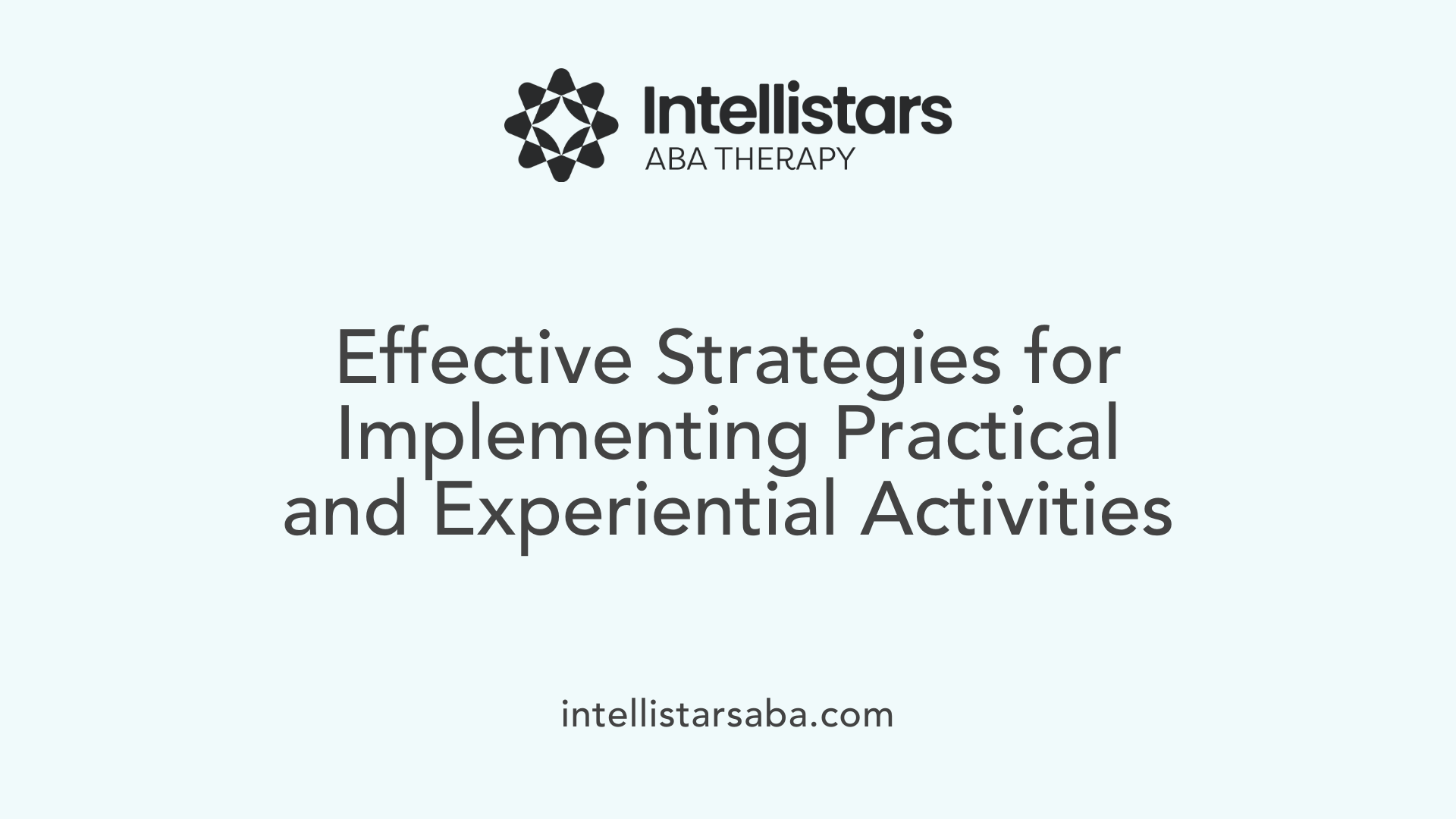
What are effective strategies for implementing experiential or practical activities at home or in educational settings?
Successful implementation of hands-on and real-world activities calls for thoughtful planning and a focus on active engagement. One effective approach is integrating real-world problems and community-based projects. These initiatives, such as service learning, internships, or collaborations with local organizations, promote hands-on involvement and foster reflection on personal experiences.
Using experiments, role-playing, and field trips helps bridge the gap between classroom knowledge and practical application. For example, conducting science experiments at home or in class turns abstract concepts into tangible discoveries. Visiting museums, zoos, or local businesses offers immersive learning experiences that deepen understanding.
Structured reflection is vital to lifelong learning. After activities, guided discussions or journals encourage learners to analyze what they've experienced, draw connections, and generalize lessons to broader contexts. This reflection helps internalize skills and knowledge.
Creating activities that are authentic, relevant, and aligned with clear objectives increases motivation and impact. Tasks should challenge learners appropriately and mirror real-life scenarios to develop applicable skills.
Furthermore, encouraging learners to take ownership fosters independence. Providing choices within activities—such as selecting topics for projects or setting personal goals—builds confidence and personal interest.
In both home and school environments, diversifying experiential opportunities addresses academic content, social skills, and emotional resilience. This comprehensive approach not only reinforces understanding but also prepares learners for real-world situations, boosting their critical thinking, problem-solving, and self-management abilities.
Connecting Lessons to Real-Life Contexts for Better Engagement
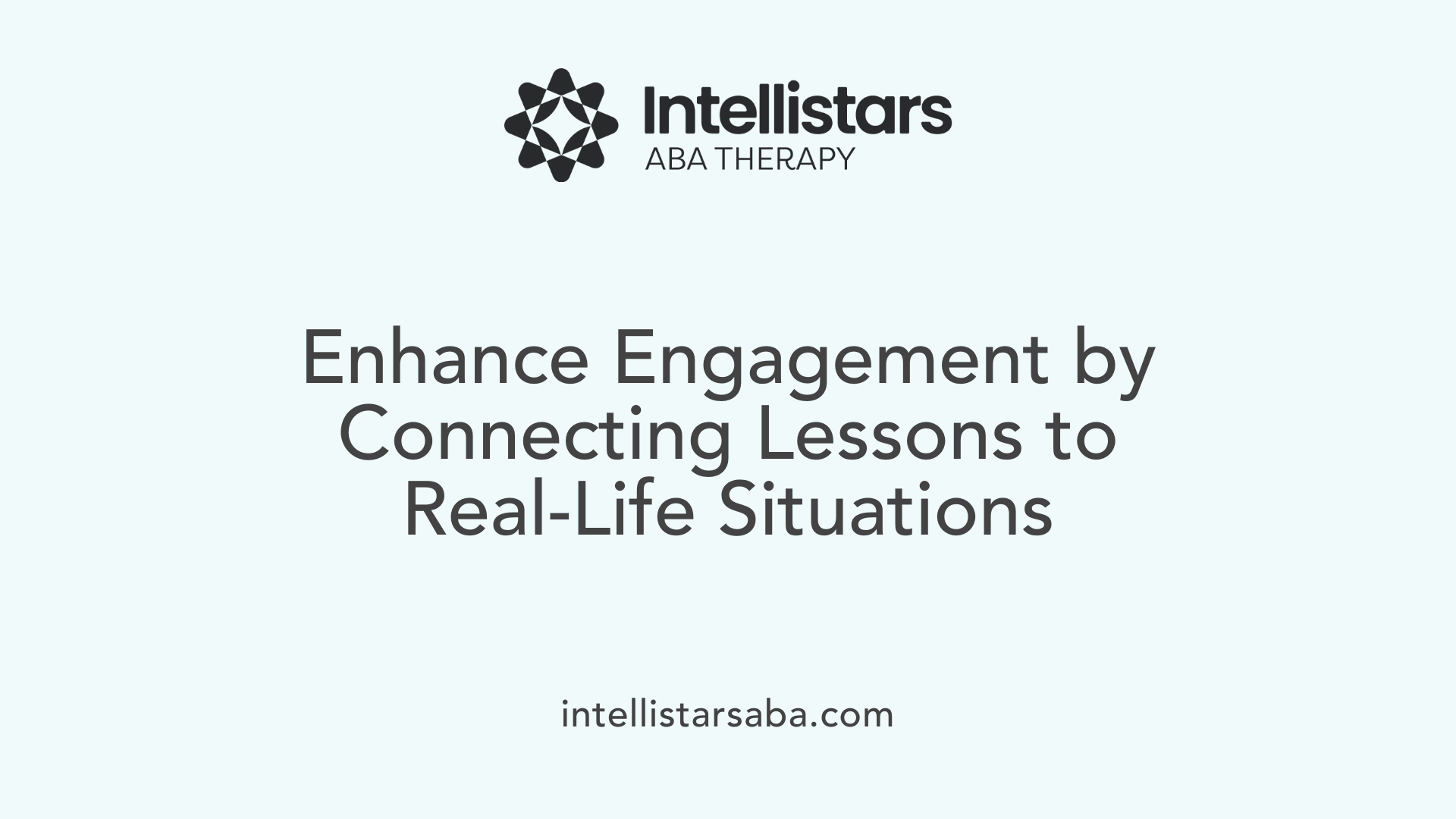
How can teachers connect lessons to real-world situations effectively?
Incorporating real-world examples into lessons can significantly boost student interest and understanding. Teachers can achieve this by using current events, local stories, or global issues as teaching tools. For example, discussing recent environmental news or community projects helps students see how academic concepts apply beyond school.
Utilizing authentic objects and hands-on activities makes abstract ideas tangible. Baking to explore fractions and ratios, creating models of ecological systems, or conducting simple science experiments at home or school connect classroom learning to everyday life.
Open-ended prompts and inquiry-based learning encourage students to explore and solve problems creatively. Asking questions like “What would happen if…?” or “How can we improve this process?” mirrors real-world decision-making and fosters critical thinking.
Involving community partners and professionals also enriches learning. Guest speakers, field trips, or collaborative projects with local organizations provide authentic experiences and insights into various careers.
Modern digital tools and multimedia extend these connections further. Students can analyze real-time data, participate in virtual tours, or share projects with wider audiences through videos or online presentations.
Lastly, engaging students with relevant projects that relate directly to their daily lives—such as planning a community event, developing a business idea, or solving local problems—helps them see the value of their education and develop essential skills for the future.
The Role of Hands-On and Play-Based Learning in Development
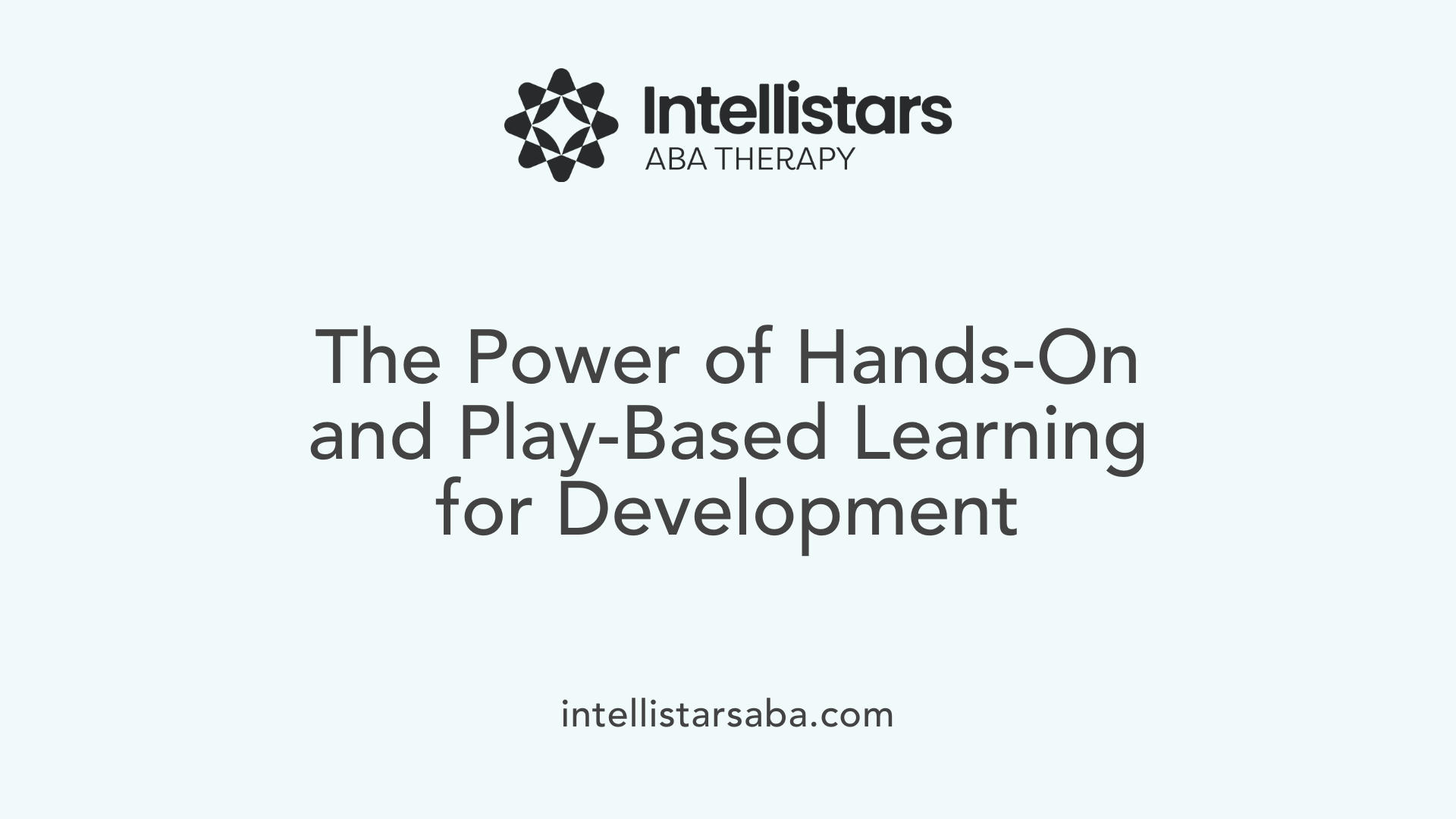
How do real-world experiences support children's learning and development?
Real-world experiences are fundamental in nurturing a child's growth across multiple areas. Through experiential learning—learning-by-doing—children actively engage with their environment, transforming abstract ideas into tangible understanding. For example, baking teaches math and science concepts like measurements and chemical reactions, while outdoor explorations foster curiosity about nature and ecosystems.
Engaging in authentic activities, whether through community projects, arts, or role-playing, promotes critical skills such as problem-solving, collaboration, and emotional regulation. These experiences help children develop self-awareness, resilience, and confidence by navigating real-life challenges. Reflection on these activities further enhances their understanding and retention, allowing children to connect classroom lessons with everyday life.
Additionally, participation in community service, creating art projects, or conducting simple science experiments can reinforce social-emotional learning and foster an appreciation for diverse perspectives. These opportunities cultivate curiosity, independence, and motivation, motivating children to explore topics deeply and develop a lifelong love of learning. Overall, real-world experiences make education more meaningful, applicable, and inspiring, equipping children with the skills needed for success in both school and life.
| Experience Type | Example Activities | Educational Benefits |
|---|---|---|
| Outdoor Exploration | Nature walks, zoo visits | Environmental awareness, physical health |
| Arts & Crafts | Painting, building, modeling | Creativity, fine motor skills |
| Community Engagement | Volunteer projects, local events | Social skills, empathy |
| Role Play & Dramatization | Historical reenactments, pretend shops | Literacy, social-emotional skills |
| STEM Experiments | Cooking, simple science tests | Critical thinking, scientific understanding |
Connecting classroom learning with real-world examples and activities stimulates curiosity and equips children with essential life skills. This integrated approach encourages them to ask questions, reflect, and apply their knowledge effectively, fostering well-rounded development.
More Info:
Searching "Benefits of experiential learning for children" will lead you to extensive resources illustrating how hands-on, authentic experiences reinforce academic and social competencies, making learning a lifelong journey of discovery.
Fostering Lifelong Learners Through Real-World Engagement
Incorporating real-world experiences into children's learning journeys is a proven way to cultivate curiosity, develop critical skills, and nurture independence. By leveraging everyday activities, community resources, and authentic projects, parents and educators can create rich learning environments that motivate children and deepen their understanding. When children see the relevance of their education to real-life situations, they become more engaged, confident, and prepared for future challenges. Through continuous exploration, reflection, and connection, adults can help children build a strong foundation for lifelong learning and success in an ever-changing world.
References
- The Need for Real-World Examples in the Classroom - Kiddom
- Learning at Home: 5 Steps to Support Authentic Learning Projects
- The Power of Learning from Experience - Future Focused Education
- Creating Authentic Learning Experiences at Home - Katie Martin
- The Power of Real-World Learning - Impact Community ACADEMY
- Real World Learning
- Bridging the Gap Between School and the Real World






